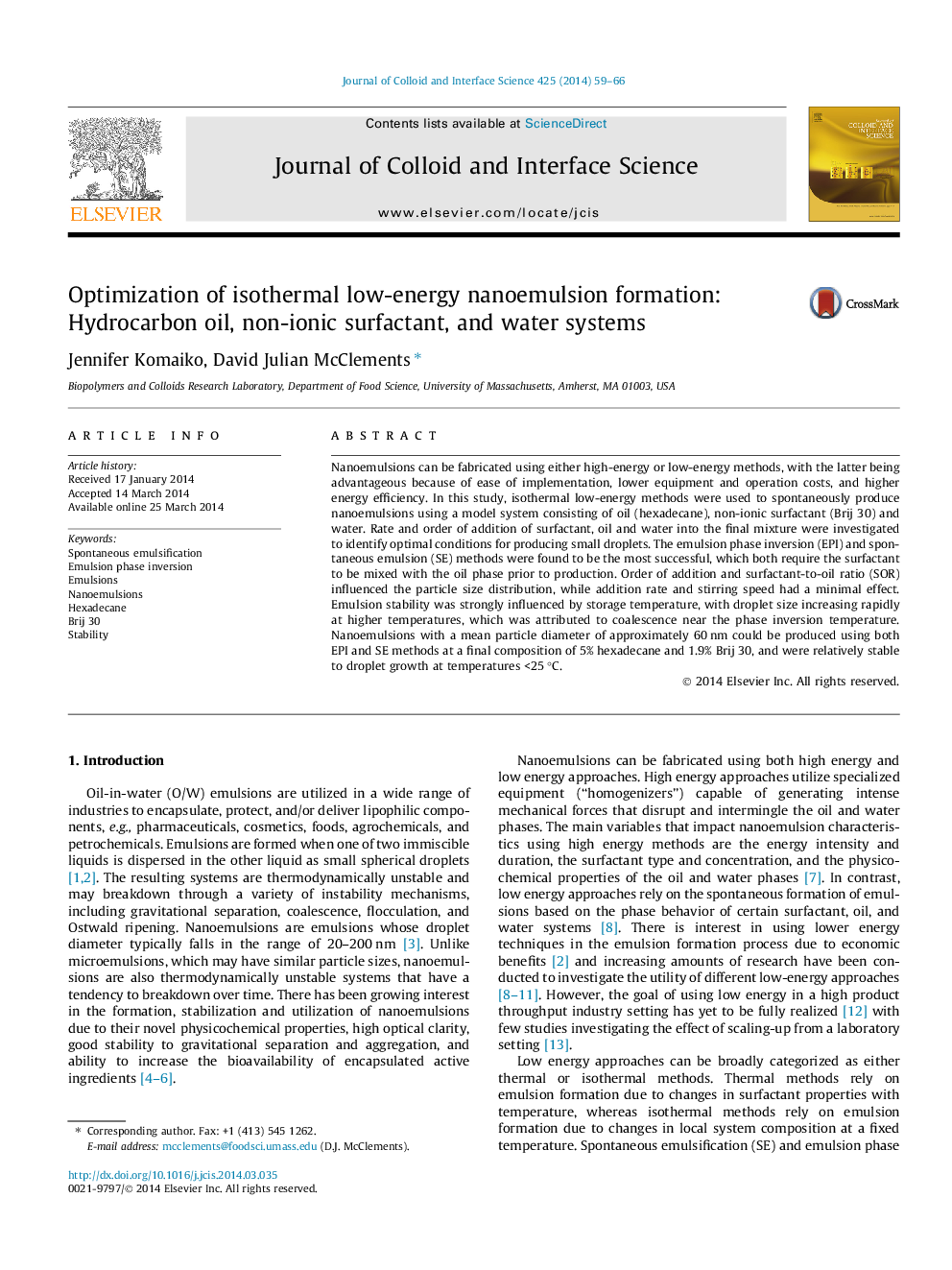| Article ID | Journal | Published Year | Pages | File Type |
|---|---|---|---|---|
| 607129 | Journal of Colloid and Interface Science | 2014 | 8 Pages |
•Formation pathway strongly influences nanoemulsion formation.•Nanoemulsions only form when oil and surfactant are mixed first.•Ultrafine droplets formed at specific a surfactant–oil–water ratio.•Droplets are highly unstable to coalescence upon heating.
Nanoemulsions can be fabricated using either high-energy or low-energy methods, with the latter being advantageous because of ease of implementation, lower equipment and operation costs, and higher energy efficiency. In this study, isothermal low-energy methods were used to spontaneously produce nanoemulsions using a model system consisting of oil (hexadecane), non-ionic surfactant (Brij 30) and water. Rate and order of addition of surfactant, oil and water into the final mixture were investigated to identify optimal conditions for producing small droplets. The emulsion phase inversion (EPI) and spontaneous emulsion (SE) methods were found to be the most successful, which both require the surfactant to be mixed with the oil phase prior to production. Order of addition and surfactant-to-oil ratio (SOR) influenced the particle size distribution, while addition rate and stirring speed had a minimal effect. Emulsion stability was strongly influenced by storage temperature, with droplet size increasing rapidly at higher temperatures, which was attributed to coalescence near the phase inversion temperature. Nanoemulsions with a mean particle diameter of approximately 60 nm could be produced using both EPI and SE methods at a final composition of 5% hexadecane and 1.9% Brij 30, and were relatively stable to droplet growth at temperatures <25 °C.
Graphical abstractFigure optionsDownload full-size imageDownload high-quality image (27 K)Download as PowerPoint slide
